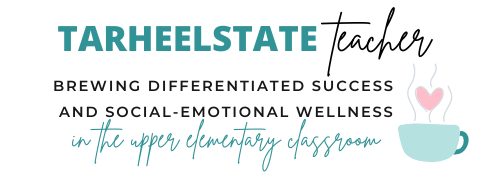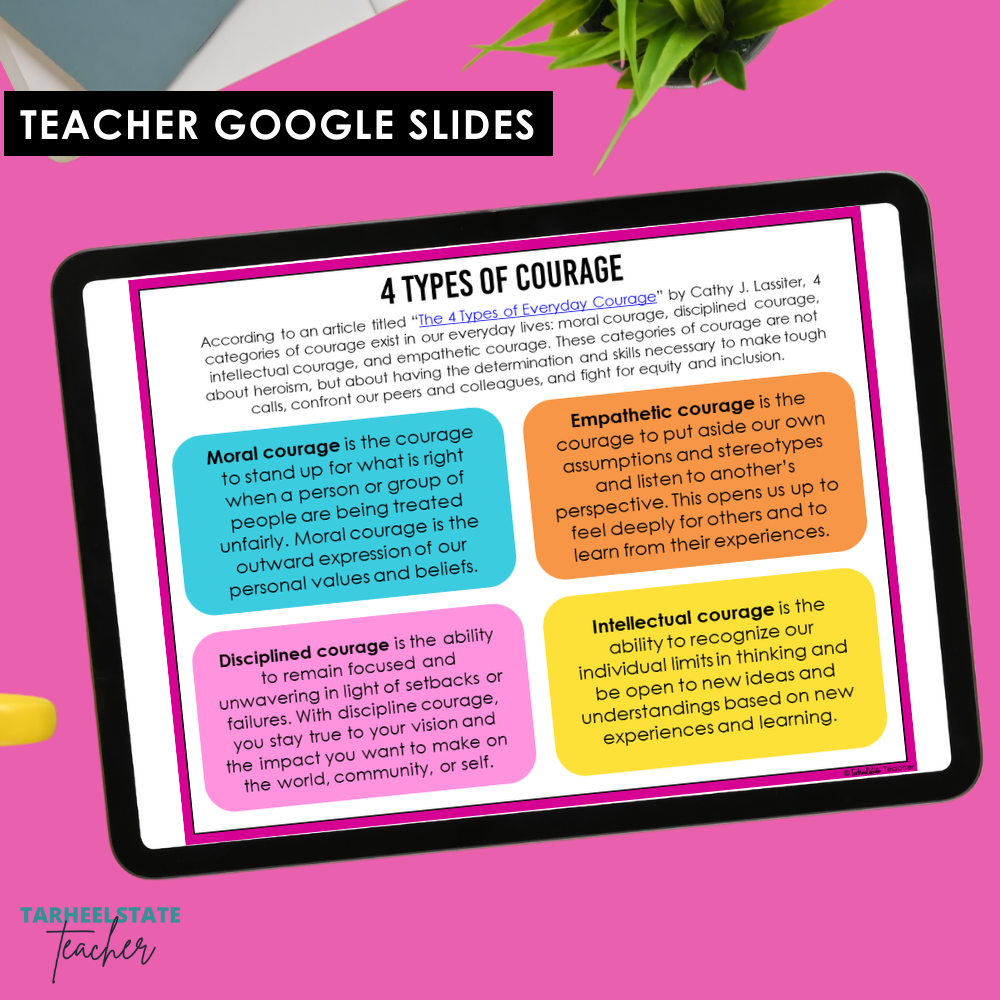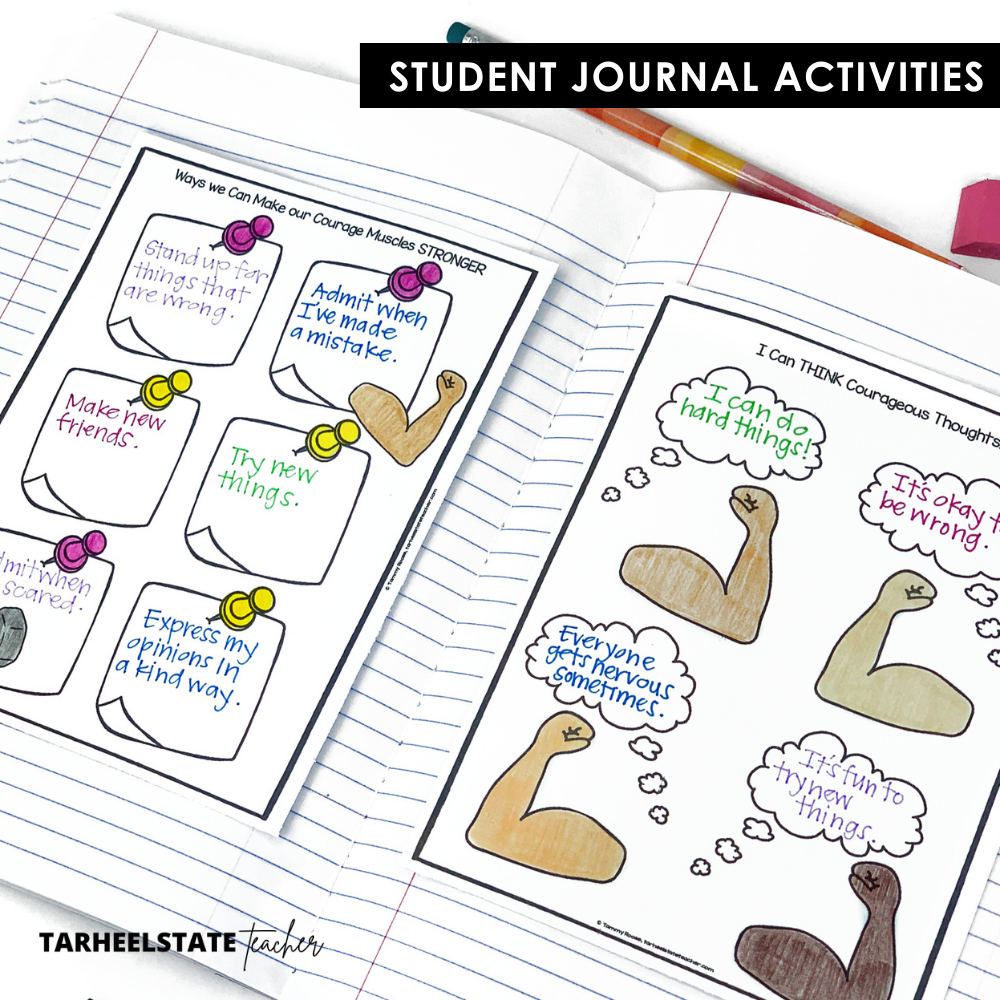Teaching Courage in the Classroom
Teaching students about courage is an important part of our job in the upper elementary classroom. Upper elementary students are typically concerned with their self-image and what their peers think about them. It’s important that we encourage them to stand up for what is right and have the courage to act with strong values when needed and in the face of fearful experiences.
Providing students with opportunities to discuss courage and using your classroom time to promote being courageous in situations where being courageous may seem too hard, unpopular, or not worth the risk is crucial for our upper elementary students’ social and emotional growth. I also believe that ensuring students know the value and the power of their courage is important for developing their character.
Enlisting students to be courageous is a key component in creating a classroom community where students feel safe to fail, safe to share fears or ask questions, and safe to be themselves.
TYPES OF COURAGE
According to an article titled “The 4 Types of Everyday Courage” by Cathy J. Lassiter, 4 categories of courage exist in our everyday lives: moral courage, disciplined courage, intellectual courage, and empathetic courage. These categories of courage are not about heroism, but about having the determination and skills necessary to make tough calls, confront our peers and colleagues, and fight for equity and inclusion. I teach my students about all of these types of courage in my SEL Courage Morning Meeting Unit.
Moral courage is the courage to stand up for what is right when a person or group of people are being treated unfairly. Moral courage is the outward expression of our personal values and beliefs.
Disciplined courage is the ability to remain focused and unwavering in light of setbacks or failures. With disciplined courage, you stay true to your vision and the impact you want to make on the world, community, or self.
Intellectual courage is the ability to recognize our individual limits in thinking and be open to new ideas and understandings based on new experiences and learning.
Empathetic courage is the courage to put aside our own assumptions and stereotypes and listen to another’s perspective. This opens us up to feel deeply for others and to learn from their experiences.
TYPES OF COURAGE WE WANT TO DEVELOP IN STUDENTS
The courage to speak up when something doesn’t feel or seem right.
The courage to stand up to their peers when they are mistreating others.
The courage to take up for those who cannot take up for themselves.
The courage to stand up for one’s beliefs and one’s sense of right and wrong.
The courage to try new things and to persist when they are not immediately successful.
The courage not to follow the crowd and not succumb to peer pressure.
The courage to be a leader in peer situations, to be a role model who encourages others who have less-developed courage to do what is right and stand up for their beliefs, too.
The courage to tell an adult when something uncomfortable happens.
The courage to have unique interests, independent thoughts, and to be themselves.
“Courage is a muscle. It grows stronger with use. ”
If we want to encourage courage in our students, where do we start?
1) Incorporate children’s literature and picture books that demonstrate courageous acts in many different ways. Topics like bullying, freedom, kindness, and accepting others have courage as an underlying message. Spiral stories about courage throughout your year and be sure to point out examples as they pop up in your read alouds. (You can see my recommended list of picture books for teaching courage at my courage picture book list on Amazon.
2) Use an activity like the “Courageous Sheet of Paper” to demonstrate how we can all make changes to strengthen our “courage muscles”. I’ve shared the lesson plan for this activity in this blog post.
3) Provide opportunities for students to examine their own level of courage. I like to use an agree/disagree questionnaire focused on their beliefs about courage in my Courage Morning Meeting Unit.
4) Engage students in acting out or thinking about different scenarios where one’s courage is being tested. During our Courage Unit, I like to ask students what their “fearful brain” thinks about the situation, what their “responsible/courageous brain” thinks about the situation, and what mindset and thoughts they would use to respond to the situation with courage.
5) Study historical figures who have demonstrated great courage and include picture books and nonfiction articles about these figures in your literacy instruction and morning meetings.
6) Help students develop “courageous thoughts” and mantras that will serve them in different situations and increase their ability to act with courage when necessary. For example, in my Courage Morning Meeting unit, I provide students with courage quotations to add to their student journals for analyzation and to reference throughout our discussions on the topic.
Acting courageously is challenging even for adults. By bringing conversations about courage to the forefront of our character education and social emotional learning discussions, we can support our students as they step into being the most courageous humans they are capable of being.
As we teach students that courage is a muscle and we can make those muscles stronger, we increase their mental toughness, positive self-esteem, and help them gain the confidence to be the best version of themselves…and that’s a worthy goal in my book!
NEED MORE RESOURCES AND DONE-FOR YOU ACTIVITIES FOR TEACHING COURAGE?
In my Courage themed morning meeting unit, you will find all of the resources you need to teach your students about courage, including: suggested read-alouds, meeting lesson ideas and activities, discussion questions, quotations about courage (in journal and poster form), and a personal courage self-assessment. Student journal pages highlight activities like examining one’s beliefs about courage, thinking through a list of scenarios to prepare one’s mind to act with courage, identifying ways to make our courage muscles stronger, and suggestions for examining historical figures who exhibited courage.
The courage theme unit is also included in the SEL Activities for Morning Meeting Set 3 resource that contains the social emotional themes intrinsic motivation, friendship, responsibility, and managing emotions. If you’re looking to increase your social-emotional focus, you’ve come to the right place!
THEMES TO GUIDE YOUR MORNING MEETINGS ALL YEAR
If you’d like more social emotional learning theme units with a focus on encouraging students’ social, emotional, and academic success, you may be interested in the Morning Meeting Mega Bundle of 17 theme units. With units focused on kindness, compassion, growth mindset, gratitude, perseverance, responsibility, managing emotions, and so much more, your engaging morning meeting plans are done for you and your students will love them! You can save 10% on the Mega Bundle of all 17 themes with the code MM10.
Which of the suggested activities for teaching courage do you think your students would respond to the most?










